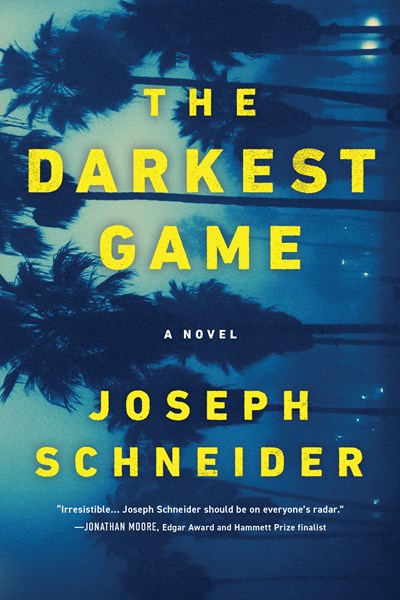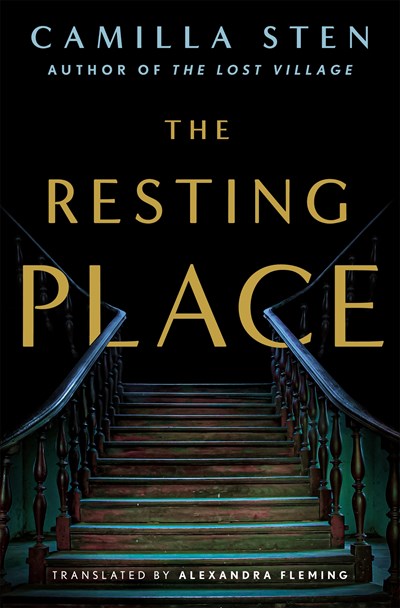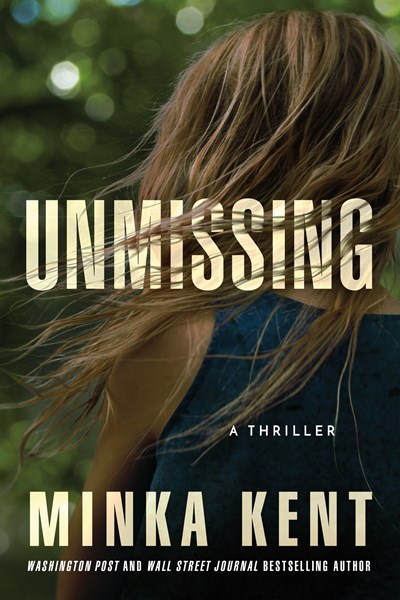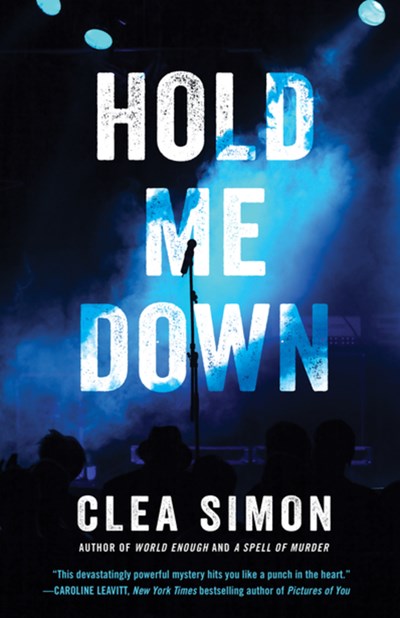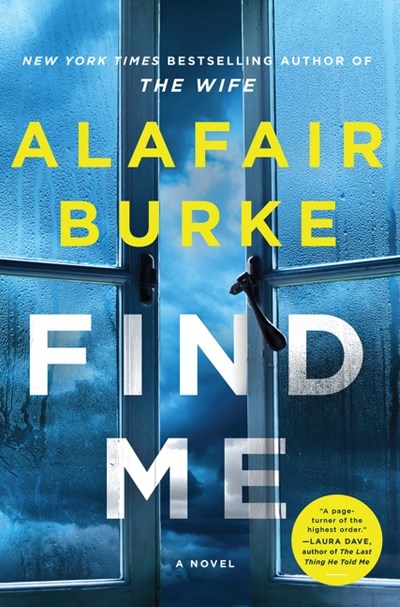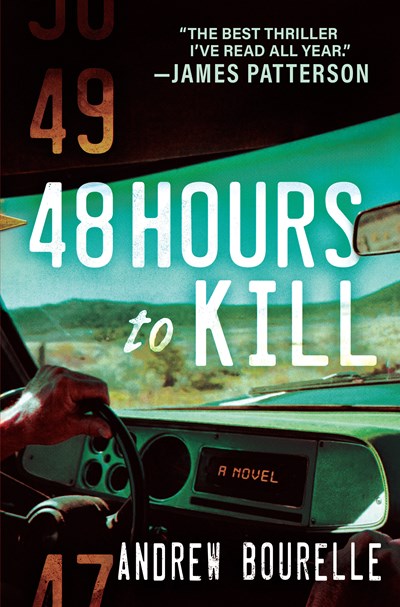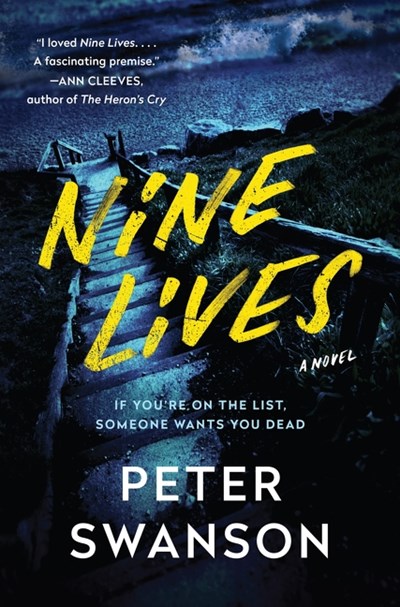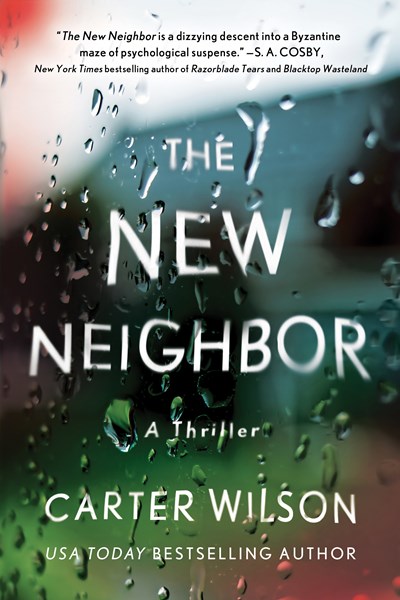Get ready to care far more than you thought you could about fictional strangers. The three in question are Jade, the busy, pampered wife of Atlanta celebrity chef Cam Lasky; and her children, Beatrix and Baxter. This book wastes no time on background, and we get to know these characters as they enter a domestic horror scene. Arriving home from violin-prodigy Beatrix’s music lesson, they are met in the garage by a masked gunman who takes them hostage for a day of psychological terror. He wants $734,296, an odd demand that Jade gives her flashy husband when she can get a word in over the phone, starting him on a desperate quest. The overextended, secretly broke businessman, who’s not the most sympathetic character, is brought to his knees while his family’s love and strength are pushed to the limit. Each character is meticulously drawn, and presented from multiple angles, as the story plays out from the alternating viewpoints of Jade, Cam, and for a short time, the kidnapper. In a clever device, much of Cam’s narrative involves him answering questions in a post-event sensationalist TV interview, which allows Belle (Dear Wife, The Marriage Lie) to parcel out information bit by tantalizing bit. Read something mellow after this, you’ll need it.
Suspense
One of the most fascinating detectives to have come along in years, Tully Jarsdel isn’t your typical cop. He abandoned a doctoral program to attend the police academy. He was raised by two dads, one of whom escaped Iran as a refugee. And he’s a brainiac—with so much trivial knowledge that his partner, detective Oscar Morales, calls him Rain Man. But he’s perfectly suited to investigate the death of Dean Burken, who was violently murdered in his own home. Burken, it turns out, was a registrar at The Huntington, a museum, library, and garden. Registrars can be powerful people, and Tully is quick to realize that Burken was abusing his position—in a big way. From deep inside The Huntington to Catalina Island, off the coast of Los Angeles, Tully and Jarsdel pursue a narrative of fraud, corruption, and greed. Fortunately, the detective work is offset with family issues, as one of Tully’s parents has a serious health crisis and the other struggles to deal with his past in the Iranian revolution. Throughout, Tully remains introspective, elusive, and unsettled—making the prospect of a fourth book all the more compelling.
When young Swedish woman Eleanor finds her manipulative, angry grandmother Vivianne dying of a stab wound, she’s more depressed and bewildered than sad. Vivianne raised Eleanor on a steady diet of scorching belittlement after the girl was left an orphan. Eleanor’s now working to overcome the hurt while learning to cope with prosopagnosia, or face blindness (she can’t recognize faces, even her own in the mirror). The story quickly moves to Solhöga, Vivianne’s country mansion, where Eleanor, her boyfriend and aunt, and Vivianne’s lawyer aim to inventory the contents. The chore becomes a terrifying ordeal when various members of the party come to mysterious harm; the somber house and sad diary entries detailing the lonely days of a long-ago maid at Solhöga add to the forbidding atmosphere. Sten’s character-driven, psychologically immersive puzzle will keep readers guessing until the end about who killed Vivianne and what’s behind the mysteries at the house. Eleanor’s face blindness adds an interesting and thankfully not overused element to the tale; an apt complement to this is Sarah Strohmeyer’s Do I Know You? (Harper, November), which features a “super-recognizer” who remembers for years the faces of people she sees even once in a crowd.
Ten years ago, Lydia was kidnapped, then spent the subsequent decade locked in a hunting cabin, subjected to torture and abuse. Miraculously, she managed to escape—feigning death—and after several months of homelessness made it to the coastal town where her husband, Luca, and Merritt, his second wife, live. At first glance, Luca and Merritt, who married a couple of years after Lydia disappeared and was declared dead, have it all: homes, cars, several restaurants that they own, a beautiful child, another on its way. How will Lydia’s resurrection rock Luca and Merritt’s world? With chapters alternating between Lydia and Merritt’s points of view, we watch the tentative relationship between the two women grow. Merritt tries to help Lydia while Lydia charts her own course, deciding how she wants to be helped. Kent does a terrific job of creating suspense—we know a bomb is about to go off, just not which one—and when it does, we’re totally spun about. But the book doesn’t end there, as two more revelations upturn everything we know. Credible? You’ll be too terrified to care.
Simon, prolific author of the Witch Cats of Cambridge series, here mines her past as a rock critic. The tale looks at former rockers visiting their own past when they reunite for a benefit after former bandmate Aimee dies. During the concert, Gal Raver, frontwoman of the band and of the book, sees a familiar face in the crowd. It’s TK, the band’s old roadie, who’s later found dead in an alleyway behind the club. Walter, Aimee’s husband, is charged with murdering TK and seems curiously apathetic when Gal tries to help him fight the accusation. Finding out what happened involves numerous murky flashbacks to Gal’s past as a messy, angry drug and alcohol addict, and her behavior and the battle for fleeting success give the book a feeling of darkness. Simon’s evocative writing puts readers inside sweaty clubs that stink of beer and vomit (so much vomit!), and reaches its first height when describing the moment the fledgling band finally gels onstage. The music fades in the last part of the novel, which explores hard truths and the differing ways they can be remembered, with Simon’s depiction of Gal’s slowly unfurling memories a second high point. Note that rape is described here in some detail. For readers who enjoy dark stories and fans of music-themed mysteries.
Hope Miller, as she’s known these days, is stuck in a legal no-man’s land. After she was found injured in a car crash, she never regained her memory, doesn’t know who she is, and has continued to live, for years, as a kind of foster daughter of a whole New Jersey town. Police pretend not to notice that she’s driving without a license. She works cash jobs. And her best friend, defense lawyer Lindsay Kelly, who found Hope in the wreck of her car all those years ago, carefully tends to her friend’s safety. Lindsay tries to understand when Hope moves to the Hamptons and asks for no contact for a while, but she’s frantic when the vulnerable woman disappears from the Hamptons home. Looking for Hope, and trying to remain loyal to her while uncovering disturbing truths, has Lindsay examining the case of an already-captured serial killer who stalked women a thousand miles from New York decades before. She’s assisted in the investigation by gutsy NYPD detective Ellie Hatcher, whom readers will know from the previous five books in this series. Also familiar will be Burke’s talent at gripping storytelling, creating thought-provoking characters that make readers squirm with ambivalence, and oh-so-clever endings. There’s no need to read the other books to follow this one, but you’ll want to.
A gripping thriller that is begging to be made into a motion picture. Ethan Lockhart, serving time in a Nevada jail for armed robbery, is released on a 48 hour furlough to attend the funeral of his younger sister, Abby. Ethan is devastated—he and Abby were super tight—but he’s also suspicious: his sister Abby was clearly assaulted in her home, but her body was never found. Ethan suspects Shark, his former boss, a one-time minor loan shark who’s now a major Reno crime boss. Ethan teams up with Abby’s best friend, Whitney—sparks fly!—and they descend into the criminal underground he had hoped to have left behind. The plot never wavers, and the few subplots all add to the story. Bourelle really cranks up the pace—the book just flies—and each chapter is ingeniously named after how many hours are left before Ethan needs to turn himself in. Netflix, please get on this!
Nine people receive an envelope in the mail that contains one piece of paper, a list, with just nine names on it, including their own. They don’t know each other, live all over the country, and, superficially at least, have nothing in common. The group includes a musician, an aspiring actor, an oncology nurse, and an FBI agent. Most pay the letter scant attention—a chance occurrence, perhaps?—and toss it aside. Then, one by one, they are murdered, often in the most extraordinary of ways. This sort of over-the-top plotting can seem completely unrealistic or completely suck you in, and in Swanson’s talented hands, it’s the latter. The author alternates the chapters among the potential victims, but does so with such deftness we never lose track of who’s who. And despite the many characters and locales, this book doesn’t have an ounce of fat on it—every fact and every detail adds to the story, propelling it forward. Unlike many suspense novels that slam into the conclusion, we discover our murderer gradually and the poignant back story emerges slowly. For fans of Jo Nesbø and Tess Gerritsen.
Aidan Marlowe—an Irish immigrant to the U.S. who is known by his last name—is lost in a life he never planned. At his young wife’s funeral, he finds out that he won millions in the lottery, and he can’t adjust to life without Holly and with the money. He and his seven-year-old twins move to a huge and forbidding house in Bury, New Hampshire, a move prompted by a voice in his head repeating “bury,” just one of the psychological oddnesses he endures. People in affluent Bury soon let him know that his decision was a bad one: the house was formerly home to a family that’s now missing four members who simply disappeared. And soon after Marlowe and his children move in, he begins receiving threatening letters that make his neighbors’ misgivings seem right but also force him to investigate the neighbors themselves. Marlowe is an unreliable narrator, so that even as readers feel for his turmoil, they are left wondering what’s really going on with this troubled character. Some truly frightening scenes lead to a gripping and satisfying conclusion, but not before a twist that will leave readers’ heads spinning. Marlowe is memorable —single dads in thrillers aren’t that common—but mainly he will stay with readers because of his offbeat vulnerability and the determination that shines through his grief. Wilson’s (The Dead Girl in 2A) unusual psychological thriller is one for fans of Stephen King who are open to reading mysteries.
A lyrical, moody crime novel—there’s no mystery and just a smidgen of suspense—set in small-town Oscar, Iowa in 1960, a town “as plain as a white wall.” When a young couple, spending the night on the banks of the Mississippi River, are attacked—and the young man is murdered—local sheriff Amos Fielding knows he needs help, so he calls for regional backup. He’s rewarded with Edward Ness from Minnesota, a stylish detective who hasn’t put down the bottle since his wife and young son were murdered seven years earlier. We follow Ness as he discovers and flirts his way through Oscar. But soon enough the narrative turns to Rigby Sellers, a terrifying, angry recluse—with coke-bottle glasses and a “jutting brow and a bent nose, a patchy beard and an incomplete set of long jaundiced teeth”—who lives on a decrepit houseboat moored on the river. Still not convinced of Sellers’s creepiness? His lovers are mannequins that he dresses and paints for their date nights. Days go by without a confirmed suspect but with plenty of rain, and a long-standing drought gives way to a swollen Mississippi that rips through the town, upending it. When more bodies are found, the townspeople are, literally, up in arms, and Sellers is directly in their cross-hairs. Hard to put down and even harder to forget, The Houseboat is a poignant rendering of a place and time.


